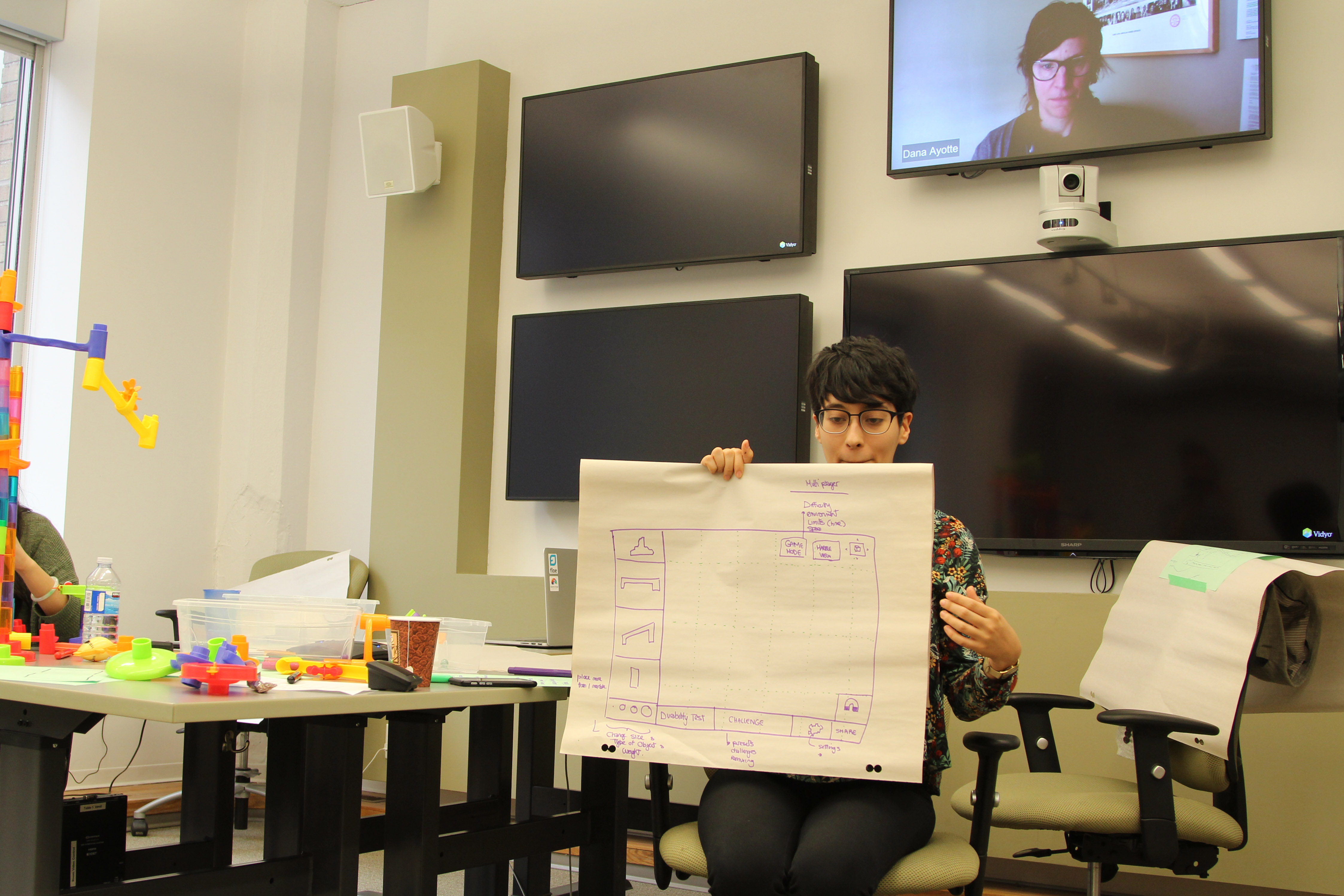Create-a-Thon
A Create-a-Thon (CaT) brings together a diverse group of people in order to collaboratively contribute to the design of a system, product or service. The key is to involve a diverse group of participants, including those individuals whose needs aren’t met (who find a product or service impossible or difficult to use), as well as people whose insights are not usually represented because they do not fit into a construct of "typical", "average", or the envisioned "target audience".

Figure 1: A group collaborates together to build a marble track based on some basic requirements.
A CaT encourages participants to collaboratively build an artifact by “designing by metaphor” and use it as a means to translate their ideas to the systems, products or services being designed or tested. This helps constrain the physical artefact and enables participants to draw out connections that wouldn't otherwise be clear if they were directly asked to design a solution. It also gives non-expert designers an easier way to get involved and contribute their ideas without having prior knowledge or expertise.
During this collaborative event, participants should continuously describe the process to each other, support each other when there are different abilities, and communicate how the work gets done. Constant negotiation of needs generates individual stories and valuable information that should be recorded, collected, and applied to enhance the design of the system, product or service being iterated upon. It is important to avoid distilling user insights and stories to a collection of averages and eliminating individual differences in favour of sameness, because each story is as important as another and will contribute to rich designs and insights.
It is possible, even desirable, to conduct several CaTs at different stages throughout a design process to gain additional insights.

Figure 2: A participant shares their group's design after being given the task of creating a software version of the physical marble track toy.
Step 1
Define a broad problem space with an end goal in mind. A broad problem space makes room for a larger demographic to participate.
Step 2
Come up with some scenarios to aid exploration and focus the collaboration. The number of scenarios depends on the problem, the number of participants, and the available time.
Step 3
Find participants from a spectrum of ages, gender, vocation, cultures, and ability to generate a variety of stories and perspectives.
Step 4
Provide multiple means of expression so every participant can choose the medium and tools that enables them to share their ideas.
Step 5
Collect and preserve stories at the end of the event to serve as a touchstone for future design decisions and inspiration.
CaT in depth
Additional information about Create-a-Thons, their rationale, and how to set up and conduct a CaT can be found in the article "Create-a-Thon" on the Floe Inclusive Learning Design Handbook.